Group Dynamics
Group Facilitation & Leadership Style
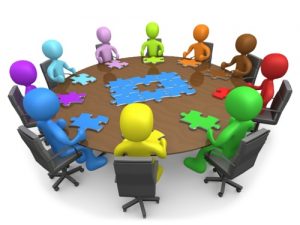
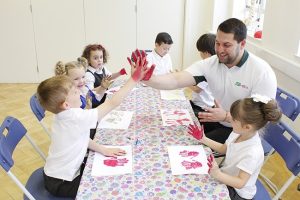
COLE’S SEVEN STEPS
Cole’s 7 Steps establish the basics of therapeutic group facilitation and this prototype can be adapted and used to address a range of needs, including those of highly functional group members.
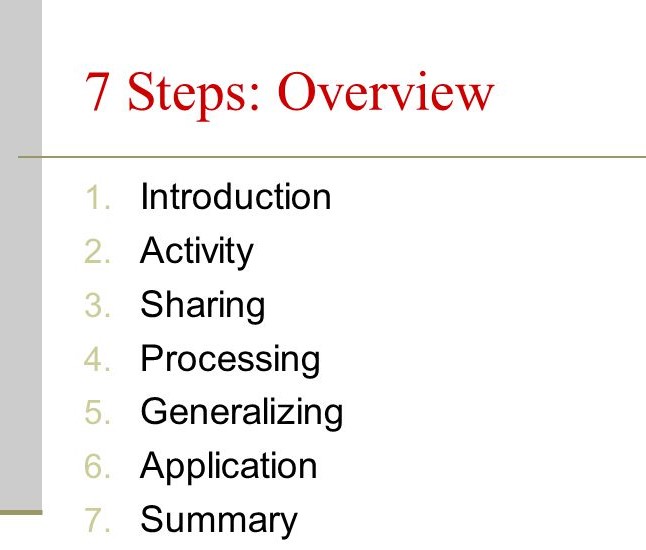
| Steps | Outline | Details |
|
1. Introduction
|
• Formal Introduction • Warm up • Setting the mood • Expectations of the group • Explaining the purpose of the group • Brief outline of session |
• Introductions using names and introduction to title of group Introducing self as OT leader and asking members to greet each other by saying their names in turn, even if they know each other, is important. Besides creating a friendly atmosphere, acknowledging each member by name shows recognition of each individual as an important part of the group which reinforces inclusion. . • Warm up By providing a short introductory activity, members’ attention will be captured and their thoughts re-focused, so that they can be prepared for the activity which is to follow.• Setting the mood. Environmental aspects to consider includes lighting, seating, getting rid of clutter and distractions. Leader’s facial expression, gestures, and tone of voice is important as these reflect the expectations of the group (light-hearted vs serious). ,,, • Expectations of the group Examples of group expectations: – Every member is expected to participate in the activity – Talent isn’t important as the focus is on discussion and learning – Reassure the members that they will not be expected to reveal anything they don’t want to share .. • Explaining the purpose of the group Define main therapeutic goals using language members will understand. The members need to know how the proposed activity can help them as this will inspire them to cooperate and facilitate their collaboration. ** If the group will be meeting on more than one occasion, then goals for all the sessions should be outlined in the first session. .. • Brief outline of session Include time frame, media, & procedures. |
| 2. Activity |
• Selection
|
• Selection of activity – Involves activity analysis. Focus on having members learning something new and meaningful. . • Timing – Activities should be short & simple – Activity portion should last no longer than 1/3 of total session (15 minutes) – Activity must be challenging and complex enough to produce meaningful discussion and learning .. • Therapeutic Goals – Goals are desired outcomes and based on the OT’s evaluation and the members’ preferences – Once goals are defined, an activity is chosen to help achieve the goals – Goals can be individually set before the group begins . • Physical and Mental Capacities of Members – The activity should match the capabilities of the members – Choose an activity challenging enough to hold their interest, but not beyond their abilities – Individuals with cognitive limitations require simplified instructions and discussion topics – Individuals with physical limitations require adaptations in materials and environment . • Knowledge & Skill of Leader -The leader should know their strengths and make use of their experience . • Adaptation of Activity – Modifications are made to compensate for disability or need for added challenge . • Giving Instructions – Activity should be presented in a systematic way – Simple and direct language – Instructions sequenced step by step – Get feedback from members to check understanding (repeat back instructions) |
| 3. Sharing | This is when the members present what they made and share their feelings. It is important to make sure that the members know they are going to be asked to share before the activity starts. Sometimes sharing is a part of the activity itself- it is not a separate step, and is incorporated into the activity. |
• The leader must make sure everyone participates in the discussion. • Ask for volunteer to start (OT can be role model). • Make sure every member is acknowledged. Go around group in order so that no member is left out of the discussion. • No-one should be pressured to share or disclose anything about themselves that they do not feel comfortable sharing |
| 4. Processing | This is where you elicit information about the experience itself. Members express positively and negatively about how they feel about the experience. | • Leaders must be keen observers of the group process. This is the most difficult step of the group process • Members are asked how they feel about their experience. Feelings are discussed first • Use open-ended questions • Ask questions to facilitate expression of both positive and negative feelings • Include recognition of non-verbal communication and their meaning |
| 5. Generalizing | Usually cannot be preplanned
This is the cognitive learning aspect of the group. It addresses the question: ‘What did you learn?’ The leader asks open questions to reveal the meaning of the activity for the members. |
• Leader mentally reviews group’s responses to activity • Leader “sums up” responses to the group • Ways to facilitate generalizing: – What are similarities or areas of agreement? – What are areas of difference/disagreement? – What issues energized the group? – Follow up on areas that generate spontaneous conversation |
| 6. Application | The application step offers each person the opportunity to verbalize the meaning of the group experience with respect to their individual goals- how what has been learnt in the group be applied to everyday life. The leader must verbalize the meaning or significance of the group experience. Link back to goals and focus | • To facilitate this process, the leader can ask: ‘What part of today’s activity will you take home with you?’ or ‘How can you use social skills in your life outside of the group?’ • Assigning homework or keeping journals can reinforce the application of learning outside the group. |
| 7. Summary | A summary of the session reviews the highlights from each of the seven steps and reinforces the main principles learned. Preferably members should help summarize. The leader ends by thanking the members for participating and by sharing their own positive feedback on the group experience.
|
• Verbally emphasize most important aspects of the group (Can ask members to for input) • Summarize learning • Summarize emotional responses • Acknowledge member participation (thank them for participating, sharing, trusting, disclosing, taking risks, etc) • Leader shares own feeling responses • End on a positive note. • End group on time |
GROUP LEADERSHIP
Group leadership is generally regarded as a formal position that carries with it certain responsibilities such as selecting members, setting goals, designing the group methods and structure, and providing guidance during the sessions. Leadership has been defined as the process of influencing group activities toward goal achievement. There is no single preferred style of small group leadership however, consensus is that optimal leadership changes to meet varying needs and circumstances.
Role of the Group Leader
• Select members
• Design group based on members’ needs
• Planning – Set goals, write group protocol
• Determine best leadership style based on members’ needs and preferences and purpose of the group
• Maintain groups integrity – Oversee group roles, maintain therapeutic norms, support positive efforts of members
• Keep channels of communication open
• Help group achieve its goals
• Evaluate progress and determine group outcomes
• Evaluate progress and determine group outcomes
Leadership Styles
i. Mosey’s Developmental Group Leadership
Mosey suggested a multilevel approach to the leadership of occupational therapy groups. She defined five developmental levels for assisting people in learning group interaction skills.
Group Level 5 Corresponding Leadership Styles
1. Parallel Directive leadership
2. Project Modified directive
3. Egocentric – Cooperative Facilitative leadership
4. Cooperative Advisory leadership
5. Mature Participatory leadership
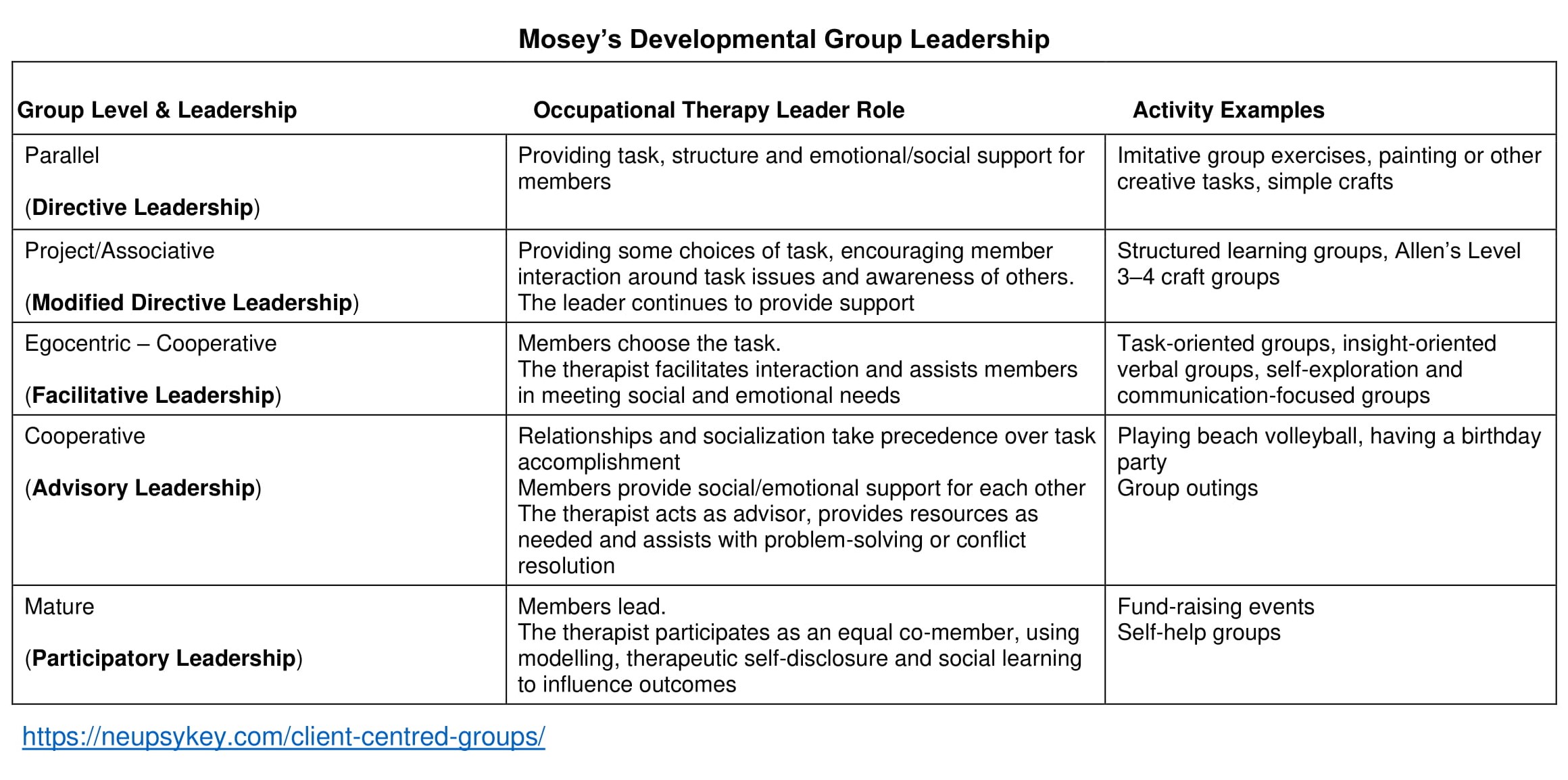
ii. Lewin Group Leadership Theory
Lewin’s three styles were a prototype of group leadership for many years.
1. Autocratic: complete control
2. Democratic: members make choices
3. Laissez- faire (‘hands off’): to let do, members do as they choose
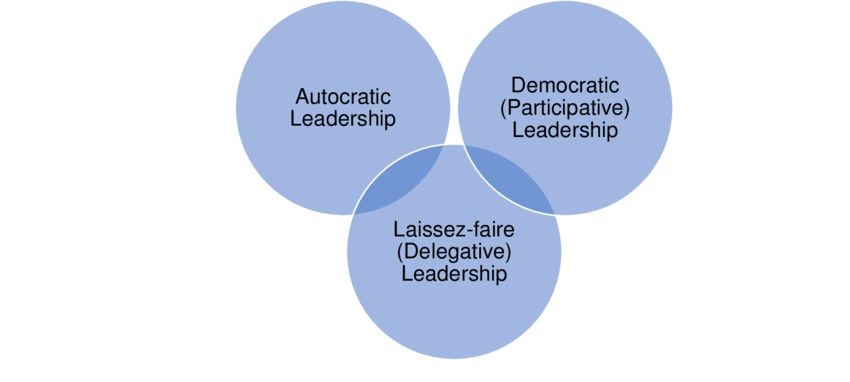
iii. 3 Basic Styles of Group Leadership used in Occupational Therapy
Occupational therapy group leadership may best be understood as existing on a continuum that encompasses the following styles:
1. Directive
2. Facilitative
3. Advisory
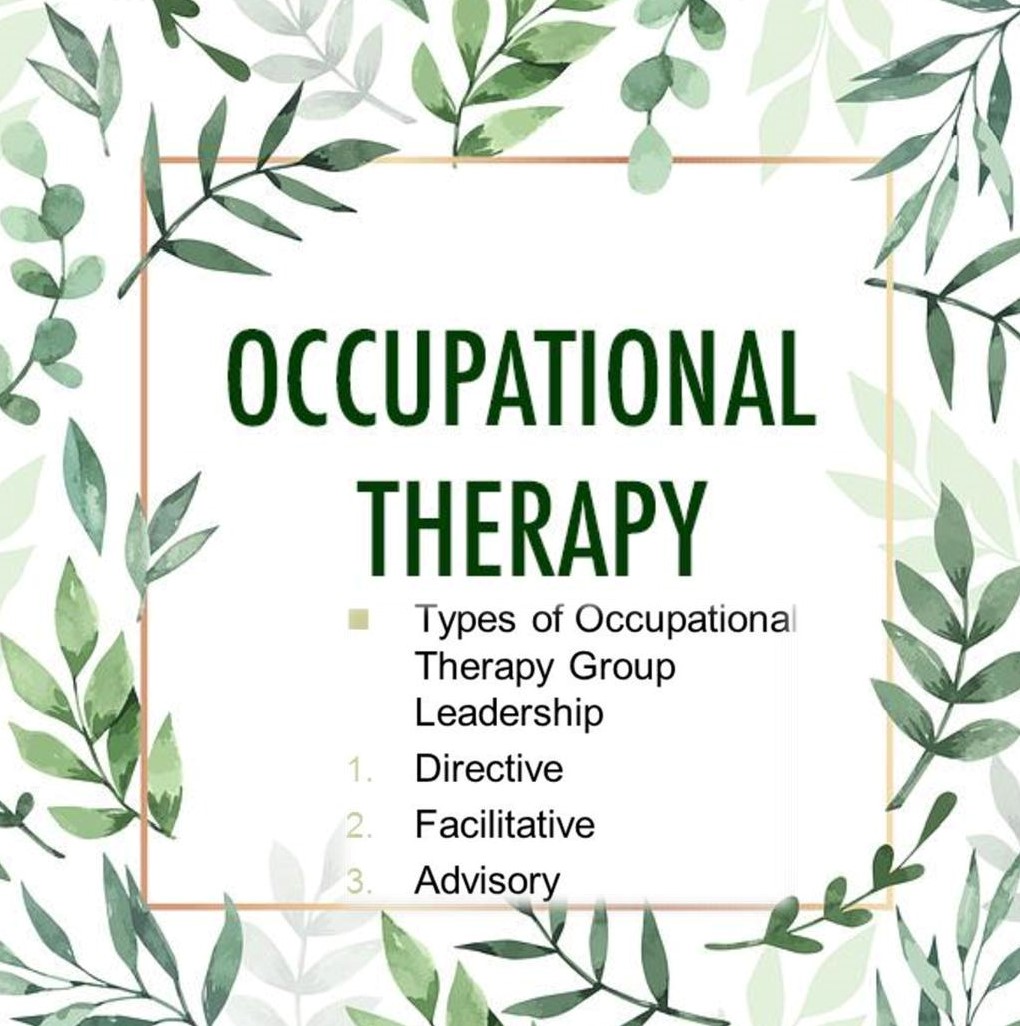
One is not better than the others, but rather each is preferred in different situations. Choice of style is informed by factors such as participants’ abilities and maturity, goals of the task and theoretical approach.
| Leadership Style | OT | Members | Example |
| Directive Leadership
Same as Autocratic |
Deciding to use this style of leadership should be based on the needs of the group. The leader should use their authority sparingly, only as necessary to make the group therapeutic for its members.
The OT is responsible for the planning and structuring of much of what takes place in the group. • Defines the group
|
Lower functioning patients who do not have the cognitive capabilities to make decisions or solve problems. Applicable for patients who present with cognitive impairments, poor capacity for insight, poor verbal skills, poor social skills, low motivation.
|
Goal is task accomplishment FORs: cognitive-behavioral, sensorimotor, cognitive disabilities Can be used with parallel and project level groups |
| Facilitative Leadership
Same as Democratic |
Decisions are made by the group with the facilitator’s guidance.
The therapist is a resource person, providing the group with needed information, needed structure, and needed equipment and supplies. The role of a facilitator is also that of an educator. The therapist explains the therapeutic aspects of an activity so that the group can choose tasks that are likely to be of benefit to them. The OT: |
Not suitable with low functioning individuals.
This type of group is the most likely to lead to group cohesiveness. It is useful in motivating them and getting them involved, and as such is most compatible with the client- centered approach. • Members are capable of making choices of activity, topic, structure |
To use this style of leadership, it presumes the group members will have a certain level of self-awareness, intelligence, insight, and self-understanding.
It is most useful in FORs that make personal direction and choice a priority. The developmental, psychodynamic, and Model of Human Occupation approaches depend on a facilitative leadership style to promote a certain level of independent functioning and decision making in group members. |
| Advisory Leadership
Same as: Laissez-Faire |
OT acts as a consultant. This is the most passive leadership style, offering expertise as needed/requested but not providing structure or goals. OT functions as a resource to the members, who set the agenda and structure the group’s functioning. |
Its use in therapy is limited to the most highly functioning groups working on goals such as problem-solving or attitude change.
• Members’ skills and engagement are high |
This type of leadership is most appropriate when working with families, caregivers, self-help groups, or community organizations.
For example: Working with professionals, families, caregivers, self-help groups, community organizations, members of a clubhouse. – OT gives advice on issues such as coping with stress at work, conserving energy in the home, or eliminating architectural and social barriers. |
The choice of the style of leadership is determined by factors such as the group member’s abilities and maturity, goals of the task and theoretical approach.

Group Co-leadership
Advantages
Disadvantages
** Need to meet on a regular basis to coordinate leadership and support one another
Resources:
https://studylib.net/doc/9427509/group-leadership-in-occupational-therapy–cole-s-7-steps
https://neupsykey.com/
https://www.flashcardmachine.com/ot-3840-midtermexamstudyguide.html